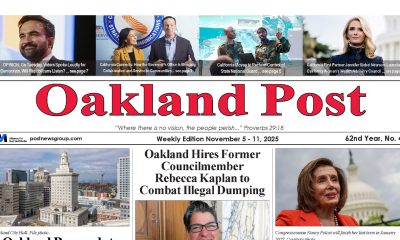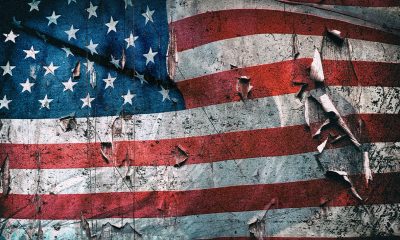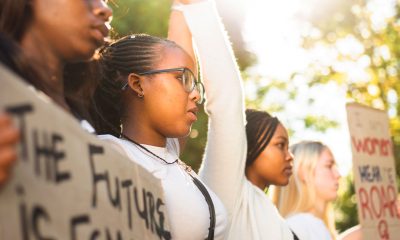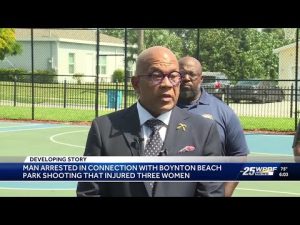#NNPA BlackPress
Interactive Comprehensive Map Shows Thousands of Lynchings Thoughout American History
NNPA NEWSWIRE — “Before this website, it was impossible to search the web and find an accurate scope of the history of American lynching. The names have always been kept safe but distant, in old archives and scholarly books and dissertations. This site leaves the record open for all Americans, especially high school students who want to learn more than what their textbook has to say,” the site’s authors wrote.
By Stacy M. Brown, NNPA Newswire Senior Correspondent
@StacyBrownMedia
In the century following the Civil War, as many as 5,000 people of color were murdered by mobs who believed in the cause of white supremacy.
On average, mobs killed nine people per month during the 1890s. Over the next 20 years, seven people each month were victims of lynch mobs.
The figures are all according to an interactive map project that tracks the history of lynching in America – state-by-state.
The map is called “Monroe Work Today.”
It is named after a black sociologist, who put together much of the information that details lynchings from 1835 to 1964, the period covered in the map’s data set.
Information found on the map reveals that black men were the most lynched group of people among the documented victims, usually due to mob violence after criminal accusations.
The map, which users can view based on region, also reveals the lynchings of Latinx people, Asians, Italians and Native Americans.
Monroe Nathan Work lived from 1866 to 1945, and the interactive map is called a rebirth of one aspect of his work.
Work was compelled to document every known lynching that was happening in the United States.
“You might already be familiar with what lynching is, and this website will examine it more,” the website’s authors write. “Of course, it starts with an act of injustice: by sentencing someone outside the law with no process or trial. Even worse, at the turn of the century, the methods of lynching had become commonplace, fueled by hatred — and unspeakably cruel. It was Mr. Work’s meticulous recordkeeping that preserves the names that are now an important part of our history.”
Work was known to love sociology for its search for the facts.
According to his biography on the website, sociology enabled Work to demonstrate how African Americans actually lived, in comparison to racist stereotypes.
For example, his work, “A Half Century of Progress,” compares the years 1866 to 1922. Despite enduring slavery and violence prior to 1866, by 1922 black people had increased literacy rates by 70 percent and vastly improved economically. The number of homes owned by black people grew from 12,000 in 1866 to 650,000 in 1922, just 62 years later. In aggregate, black people’s wealth grew by 750 percent, increasing from $20 million to $1.5 billion.
“Before this website, it was impossible to search the web and find an accurate scope of the history of American lynching. The names have always been kept safe but distant, in old archives and scholarly books and dissertations. This site leaves the record open for all Americans, especially high school students who want to learn more than what their textbook has to say,” the site’s authors wrote.
The website provides an education on the definition of lynching.
It doesn’t always mean hanged from a tree.
“There were many ways that a mob could take the life of a victim they were after. Yes, many people died by hanging, but others were killed from a hail of gunshots, dragged to death behind a vehicle, and some were burned alive. Sometimes, the mob would do all of these things to a single person,” the authors wrote.
A victim usually was accused of something. Thus, lynching wasn’t a random attack. Many times, it was utterly trivial and not a crime at all, like talking back to a white person or daring to file a lawsuit.
Some lynchings that were rationalized as defending a women’s honor — a white woman — were actually covering up what were at the time, forbidden relationships. Newspaper articles from the period reveal the flimsy reason was a black man found “hiding under the bed.”
Whatever the charge, it was never allowed to take its course in court. An angry group broke into the jail, pulled the person out, and executed him or her outside the law. Sometimes victims were tortured for a crowd’s amusement.
Some lynchings went far beyond mere murder. They included dark and brutal tortures to a person’s eyes, fingernails, genitals, orifices. People were set afire, or bones were crushed, bodies mutilated, and sometimes cut into pieces. The person died in agony. This kind of cruelty served as a lesson of terror to everyone else who might challenge the status quo.
Further, onlookers showed no signs of guilt for participating.
Many lynchings gathered a large crowd of spectators, like a carnival, and the lynching might be prolonged until more spectators could arrive. For example, the lynching of Sam Hose in 1899 in Georgia caused the railroad to run extra trains to let more people come right after Sunday church. Many photographs exist today because they were taken as proud souvenirs and postcards.
Lynching began as a form of self-appointed justice in local communities in the 1800s, when townspeople made grave accusations first but never bothered to gather the proof. Then as the 1870s turned into the ’80s and onward, lynching became adopted as a terrorist tactic by white supremacists. When slavery was abolished, and as settlers continued to arrive on the West coast, there were very real crusades to change the United States to a place only for whites.
In the South, a mythology arose that lynching was the only way to protect their “gentle women” against a crime wave of rapes. Similarly, in 1933, the Governor of California publicly praised the lynching of one kidnapper by people on the street. He promised to pardon anyone who might be prosecuted for participating in the mob, according to the website authors.
“God made the white into a man and implanted within his breast that determination to always be supreme among races of men,” read an October 29, 1920 article in the Okaloosa News-Journal in Florida. “This is why the white man of the South, standing out boldly tells civilization: ‘I am a white man! I will rule!’ Were he to do otherwise, he would be a renegade to his race.”
To view the map, click here.
#NNPA BlackPress
LIHEAP Funds Released After Weeks of Delay as States and the District Rush to Protect Households from the Cold
BLACKPRESSUSA NEWSWIRE — The federal government has released $3.6 billion in home heating assistance after a delay that left states preparing for the start of winter without the program’s annual funding.

By Stacy M. Brown
Black Press USA Senior National Correspondent
The federal government has released $3.6 billion in home heating assistance after a delay that left states preparing for the start of winter without the program’s annual funding. The Low-Income Home Energy Assistance Program, known as LIHEAP, helps eligible households pay heating and cooling bills. The release follows a shutdown that stretched 43 days and pushed agencies across the country to warn families of possible disruptions.
State officials in Minnesota, Kansas, New York, and Pennsylvania had already issued alerts that the delay could slow the processing of applications or force families to wait until December for help. In Pennsylvania, more than 300,000 households depend on the program each year. Minnesota officials noted that older adults, young children, and people with disabilities face the highest risk as temperatures fall.
The delay also raised concerns among advocates who track household debt tied to rising utility costs. National Energy Assistance Directors Association Executive Director Mark Wolfe said the funds were “essential and long overdue” and added that high arrearages and increased energy prices have strained families seeking help.
Some states faced additional pressure when other services were affected by the shutdown. According to data reviewed by national energy advocates, roughly 68 percent of LIHEAP households also receive nutrition assistance, and the freeze in multiple programs increased the financial burden on low-income residents. Wolfe said families were placed in “an even more precarious situation than usual” as the shutdown stretched into November.
In Maryland, lawmakers urged the Trump administration to release funds after the state recorded its first cold-related death of the season. The Maryland Department of Health reported that a man in his 30s was found outdoors in Frederick County when temperatures dropped. Last winter, the state documented 75 cold-related deaths, the highest number in five years. Rep Kweisi Mfume joined more than 100 House members calling for immediate federal action and said LIHEAP “is not a luxury” for the 100,000 Maryland households that rely on it. He added that seniors and veterans would be placed at risk if the program remained stalled.
Maryland Gov. Wes Moore used $10.1 million in state funds to keep benefits moving, but noted that states cannot routinely replace federal dollars. His administration said families that rely on medical equipment requiring electricity are particularly vulnerable.
The District of Columbia has already mapped out its FY26 LIHEAP structure in documents filed with the federal government. The District’s plan shows that heating assistance, cooling assistance, weatherization, and year-round crisis assistance operate from October 1 through September 30. The District allocates 50 percent of its LIHEAP funds to heating assistance, 10 percent to cooling, 13 percent to year-round crisis assistance, 15 percent to weatherization, and 10 percent to administrative costs. Two percent is used for services that help residents reduce energy needs, including education on reading utility bills and identifying energy waste.
The District’s plan lists a minimum LIHEAP benefit of $200 and a maximum of $1,800 for both heating and cooling assistance. Crisis benefits are provided separately and may reach up to $500 when needed to resolve an emergency. The plan states that a household is considered in crisis if it has been disconnected from energy service, if heating oil is at 5 percent or less of capacity, or if the household has at least $200 owed after the regular benefit is applied.
The District’s filing notes that LIHEAP staff conduct outreach through community meetings, senior housing sites, Advisory Neighborhood Commissions, social media, posters, and mass mailings. The plan confirms that LIHEAP applicants can apply in person, by mail, by email, or through a mobile-friendly online application and that physically disabled residents may request in-home visits.
As agencies nationwide begin distributing the newly released funds, states continue working through large volumes of applications. Wolfe said LIHEAP administrators “have been notified that the award letters have gone out and the states can begin to draw down the funds.”
#NNPA BlackPress
Seven Steps to Help Your Child Build Meaningful Connections
BLACKPRESSUSA NEWSWIRE — Swinging side by side with a friend on the playground. Sharing chalk over bright, colorful sidewalk drawings. Hiding behind a tree during a spirited game of hide-and-seek. These simple moments between children may seem small, but they matter more than we think

By Niyoka McCoy, Ed.D., Chief Learning Officer, Stride/K12
Swinging side by side with a friend on the playground. Sharing chalk over bright, colorful sidewalk drawings. Hiding behind a tree during a spirited game of hide-and-seek. These simple moments between children may seem small, but they matter more than we think: They lay the foundation for some of life’s most important skills.
Through everyday play, young children begin learning essential social and emotional skills like sharing, resolving conflicts, showing empathy, and managing their emotions. These social skills help shape emotional growth and set kids up for long-term success. Socialization in early childhood isn’t just a “nice-to-have”—it’s essential for development.
Yet today, many young children who haven’t yet started school aren’t getting enough consistent, meaningful interaction with peers. Research shows that there’s a decline in active free play and peer socialization when compared to previous generations.
There are many reasons for this. Children who are home with a parent during the day may spend most of their time with adults, limiting opportunities for peer play. Those in daycare or preschool may have restricted free play, and large classrooms can reduce supervision and social coaching. Some children live in rural areas, are homebound due to illness, have full schedules, or rely on screens to fill their playtime. And for some families, finding other families with young children to connect with isn’t easy.
While these challenges can feel significant, opportunities for connection still exist in every community. Families can take simple steps to help children build friendships, create a sense of belonging, and strengthen social skills. Here are some ideas to get started:
- Storytime sessions at libraries or local bookstores
- Community offerings such as parent-child workshops, art, music, gymnastics, swimming, or sports programs
- Weekly events at children’s museums, which may include art projects, music workshops, or science experiments
- Outdoor exploration, where kids can play with peers
- Local parenting groups that organize playdates and group activities
- Volunteer opportunities where children can participate, such as pet adoption events or packing meals at a food bank
- Classes for kids at local businesses, including hardware, grocery, or craft stores
Some of these community activities are free or low-cost and give kids the chance to build friendships and practice social skills. Parents can also model positive social behavior by interacting with other parents and encouraging their children to play with their peers.
These may seem like small moments of connection, but they can have a powerful impact. Every time your child shares a toy, plays make-believe with peers, or races a friend down the slide, they’re not just playing—they’re learning the skills that build confidence, empathy, and lasting friendships. And it’s good for you, too. Creating intentional opportunities for play also helps you strengthen your own network of parents who can support one another as your children grow together.
#NNPA BlackPress
Seven Steps to Help Your Child Build Meaningful Connections
BLACKPRESSUSA NEWSWIRE — Swinging side by side with a friend on the playground. Sharing chalk over bright, colorful sidewalk drawings. Hiding behind a tree during a spirited game of hide-and-seek. These simple moments between children may seem small, but they matter more than we think

By Niyoka McCoy, Ed.D., Chief Learning Officer, Stride/K12
Swinging side by side with a friend on the playground. Sharing chalk over bright, colorful sidewalk drawings. Hiding behind a tree during a spirited game of hide-and-seek. These simple moments between children may seem small, but they matter more than we think: They lay the foundation for some of life’s most important skills.
Through everyday play, young children begin learning essential social and emotional skills like sharing, resolving conflicts, showing empathy, and managing their emotions. These social skills help shape emotional growth and set kids up for long-term success. Socialization in early childhood isn’t just a “nice-to-have”—it’s essential for development.
Yet today, many young children who haven’t yet started school aren’t getting enough consistent, meaningful interaction with peers. Research shows that there’s a decline in active free play and peer socialization when compared to previous generations.
There are many reasons for this. Children who are home with a parent during the day may spend most of their time with adults, limiting opportunities for peer play. Those in daycare or preschool may have restricted free play, and large classrooms can reduce supervision and social coaching. Some children live in rural areas, are homebound due to illness, have full schedules, or rely on screens to fill their playtime. And for some families, finding other families with young children to connect with isn’t easy.
While these challenges can feel significant, opportunities for connection still exist in every community. Families can take simple steps to help children build friendships, create a sense of belonging, and strengthen social skills. Here are some ideas to get started:
- Storytime sessions at libraries or local bookstores
- Community offerings such as parent-child workshops, art, music, gymnastics, swimming, or sports programs
- Weekly events at children’s museums, which may include art projects, music workshops, or science experiments
- Outdoor exploration, where kids can play with peers
- Local parenting groups that organize playdates and group activities
- Volunteer opportunities where children can participate, such as pet adoption events or packing meals at a food bank
- Classes for kids at local businesses, including hardware, grocery, or craft stores
Some of these community activities are free or low-cost and give kids the chance to build friendships and practice social skills. Parents can also model positive social behavior by interacting with other parents and encouraging their children to play with their peers.
These may seem like small moments of connection, but they can have a powerful impact. Every time your child shares a toy, plays make-believe with peers, or races a friend down the slide, they’re not just playing—they’re learning the skills that build confidence, empathy, and lasting friendships. And it’s good for you, too. Creating intentional opportunities for play also helps you strengthen your own network of parents who can support one another as your children grow together.
-

 Activism3 weeks ago
Activism3 weeks agoOakland Post: Week of November 12 – 18, 2025
-

 Activism4 weeks ago
Activism4 weeks agoOakland Post: Week of November 5 – 11, 2025
-

 Activism2 weeks ago
Activism2 weeks agoIN MEMORIAM: William ‘Bill’ Patterson, 94
-

 Activism3 weeks ago
Activism3 weeks agoHow Charles R. Drew University Navigated More Than $20 Million in Fed Cuts – Still Prioritizing Students and Community Health
-

 Bay Area3 weeks ago
Bay Area3 weeks agoNo Justice in the Justice System
-

 #NNPA BlackPress3 weeks ago
#NNPA BlackPress3 weeks agoThe Perfumed Hand of Hypocrisy: Trump Hosted Former Terror Suspect While America Condemns a Muslim Mayor
-

 #NNPA BlackPress2 weeks ago
#NNPA BlackPress2 weeks agoTrump’s Death Threat Rhetoric Sends Nation into Crisis
-

 #NNPA BlackPress4 weeks ago
#NNPA BlackPress4 weeks agoProtecting Pedophiles: The GOP’s Warped Crusade Against Its Own Lies



















































